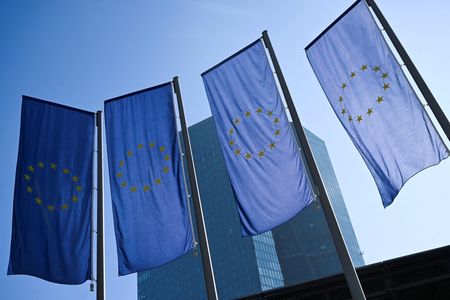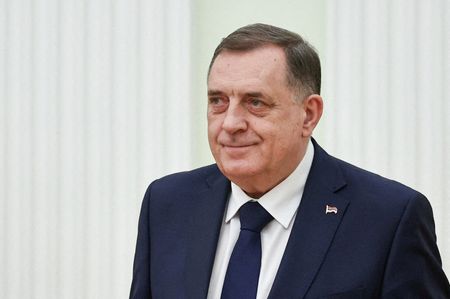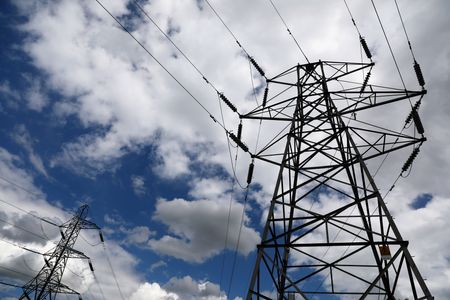By Balazs Koranyi and Francesco Canepa
FRANKFURT (Reuters) -The European Central Bank is all but certain to leave interest rates unchanged for a third meeting in a row on Thursday, enjoying a rare moment of low inflation and steady growth even in the face of turbulence caused by shifting trade relations.
The ECB cut rates by a combined two percentage points in the year to June but has been on the sidelines since, making clear it is in no hurry to change policy given that inflation is at target, a sweet spot neither the Federal Reserve, the Bank of England nor the Bank of Japan has achieved.
Even if all 88 economists polled by Reuters see no change in rates this month, ECB President Christine Lagarde is unlikely to shut the door to further policy easing as the ever-shifting U.S. tariff regime has yet to work its way through the economy, keeping uncertainty elevated and raising the risk of inflation going too low.
CAN’T OVERENGINEER POLICY
For now, Lagarde will likely stick to the ECB’s mantra that policy is in a ‘good place’ and incoming data will guide policymakers, who can live with small deviations from the inflation target and will not try to ‘overengineer’ policy.
“We continue to think that the burden of proof remains on data to deteriorate to justify further cuts,” BNP Paribas said in a note to clients. “The bar for further rate cuts is relatively high, in our view, even if some council members want to keep the option of a ‘risk-management’ cut on the table.”
Data since the last meeting has been consistent with the ECB’s last projection of modest but steady growth and inflation holding around target.
Business activity, measured in a purchasing managers survey, is accelerating, sentiment in Germany, the bloc’s biggest nation, is improving and business are becoming more optimistic, partly because the fog over tariffs is starting to lift.
These relatively upbeat reports are balanced out by more sombre data showing that industry continues to suffer, exports to the United States are down sharply and growing evidence that China is dumping goods it cannot sell in the U.S. on European markets.
WILL THE GOOD PLACE LAST?
The real question then is whether the outlook can remain in such a fine balance.
“With the negative impact of tariffs now beginning to materialise, labour-market resilience being challenged, the diversion of Chinese trade to Europe already happening and the oil market remaining well supplied despite recent U.S. sanctions on Russia’s largest oil producers, the risk of the ECB undershooting its inflation target over the medium term is real,” UniCredit said.
Such a risk would strengthen the case for a ‘slightly lower’ policy rate, ECB chief economist Philip Lane argued, a message that is consistent with market pricing, putting the chance of one last cut by next June at 50%.
But the majority of economists and a long list of policymakers still see rates remaining where they currently are on the premise that uncertainty will fade, households have plenty of savings to spend and the German government is raising spending sharply.
“The stable labour market, a growing service sector and the German fiscal stimulus will provide a tailwind to the euro zone economy in the coming months,” Felix Schmidt, an economist at Berenberg, said.
Inflation could still undershoot the ECB’s target next year but it is then seen coming back up and policymakers have made it clear that they can tolerate temporary deviations.
The real test of this tolerance is only likely to come in December, when the bank presents fresh projections, including initial estimates for 2028.
(Reporting by Balazs Koranyi; Editing by Kirsten Donovan)










